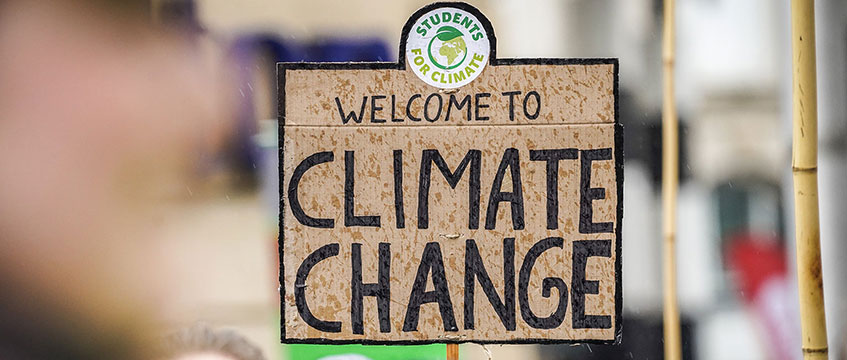The UK has pledged to reach net zero carbon emissions by 2050, and now stands among 120 countries with this target in its sights. Sonia Janday looks at the role of real estate in the transition.
So far, the UK’s record on climate change is commendable. Having already managed to trim carbon emissions by around 38% since 1990 – faster than any other major developed economy – the momentum behind its transition is really gaining pace. However, there is still much to do, and meeting the net zero target will reshape the way the economy is fuelled and built.
Economists, a famously disagreeable bunch, tend to agree on one thing: the power of incentives. That is why the UK’s legally binding target to reach net zero by 2050 is so important. The legal case for action is also gaining traction. A recent count by the London School of Economics confirmed climate-related litigation is underway in 28 countries, with cases designed to force governments and companies into acting more swiftly. In the Netherlands, for example, the pressure group Urgenda recently won a case calling for a more rapid transition, with the chief justice stating that the authorities’ failure to act might cost lives.
This new sense of urgency is rubbing off on professional investors. Recently, the Department for Work and Pensions has been seeking to extend reporting requirements for UK pension schemes, making it compulsory for them to reveal more about their climate-related exposures. Although organisations such as the Net-Zero Asset Owner Alliance (to which Aviva plc belongs) are supportive in principle, it certainly marks a step change in government involvement.
Prior to this, not everyone has been willing to reveal their hand along the lines recommended by the Taskforce on Climate-related Financial Disclosures (TCFD), with some fearing it could bring first-mover disadvantage. However, it looks as if pressure is unlikely to go away; TCFD compliance becomes mandatory for all signatories to the UN Principles for Responsible Investment later this year.
Unsurprisingly, these changes put environmental efficiency and specific emissions targets firmly on the corporate agenda. Now more and more companies are setting out road maps to decarbonise. The legal “stick”, it appears, carries weight.
Stepping up as asset owners
In this context, the owners and managers of real estate and infrastructure are uniquely placed to make a difference. Why? Because these assets generate a significant carbon load. Together, building and construction generates around 39% of all global carbon emissions; heating, lighting and cooling properties make up another 28%, so there is plenty of scope for improvement in our built environment.
Again, one way to get owners and occupiers to focus on efficiency is through contractual legal agreements: green leases or memoranda of understanding that set out explicit commitments. Transitioning buildings towards net zero will mean addressing the Minimum Energy Efficiency Standard (MEES) and energy performance certificates (EPCs). Landlords will need additional controls over certain activities: collecting and sharing data, for example, or encouraging the shift to renewable energy. Leases drafted today can be important tools to help support those outcomes, but only time will tell how well the clauses will capture environmental sensitivities in 15 or 20 years’ time.
Yet, in our experience, open and honest collaboration can be just as effective. For example, bringing a property manager, external consultants and occupiers together to assess energy usage at Manchester’s Corn Exchange, a Grade II listed building, helped cut energy consumption costs by more than £800,000 in three years. By rolling out this approach across 25 sites in the UK, Aviva should (help) shrink the carbon footprint and deliver cost savings.
Careful management can also bring substantial improvements in carbon load. For example, the emissions generated by our directly managed real estate portfolio have been cut by more than 60% since 2015. Improving energy efficiency, accessing power from renewables and exiting from parts of the portfolio that fail to meet environmental criteria have clearly paid off. Meanwhile, there are targets in place to reduce direct and indirect emissions from power generation out to 2025.
Changes like these therefore make both environmental and business sense. As well as being better for the planet, greener buildings have higher occupancy levels and tenants reporting higher levels of satisfaction – which translates into higher rents.
Equally, though, we must be prepared to make tough decisions to dispose of assets that fall short. If they have high environmental costs, carry high reletting risk and their transformation will be overly costly, it makes no sense to carry them. This is something to be sensitive to as the regulatory environment evolves. In the Netherlands, for instance, tougher than expected regulatory demands on the energy efficiency of commercial buildings undermined the value of non-compliant assets almost overnight.
Of course, there are challenges. For example, a substantial proportion of our real estate portfolio is composed of full repairing and insuring leases. Data from occupiers is sparse, which makes the challenge of reducing energy consumption tougher. Collaborative relationships between landlord and occupier take time to nurture. Ultimately, landlords must take responsibility, and divert resources to helping their customers improve energy efficiency.
Changing course
Bringing about net zero by 2050 will require some radical changes of direction, and significant efforts from the real estate and infrastructure industries. Nevertheless, it is encouraging to see how fast progress can be delivered through a rigorous investment and asset management regime that applies cutting-edge technologies.
“The climate initiative starts with you,” Professor Dieter Helm from Oxford University told my colleagues earlier this year. It’s time we all stepped up.
Sonia Janday is a senior counsel within Aviva Investors’ direct real estate, real assets business








